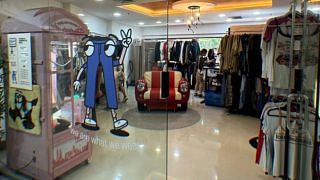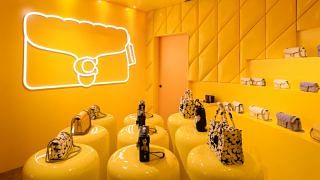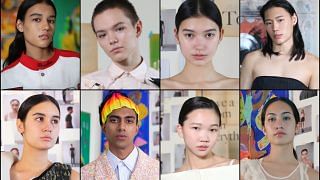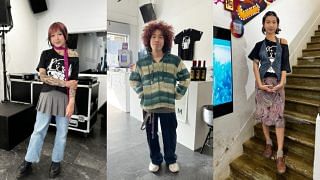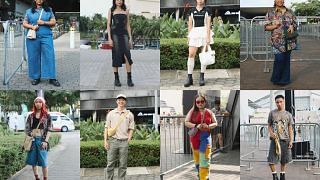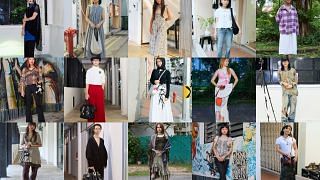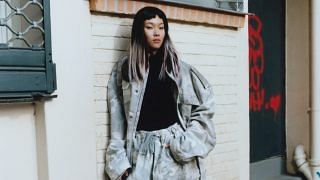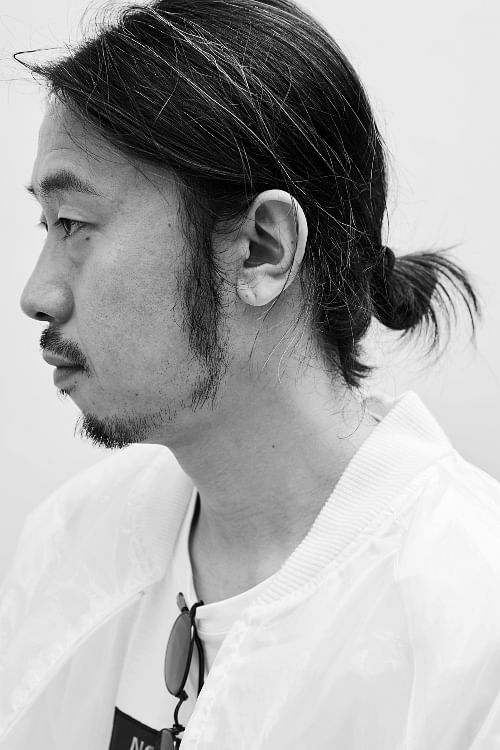
If you’re an ardent follower of LVMH’s prestigious yearly round up of some of the world’s most talented and promising young designers – chances are you’ve already heard of Doublet. Having garnered a loyal following even prior to getting onto LVMH’s radar, the six-year-old cult Japanese label has amassed a global following. Further propelled by its LVMH prize win in 2018, the label, under the watchful eye of founder Masayuki Ino shows no signs of slowing down.
Its latest proposition? A fun-meets-gore installation at Dover Street Market Singapore – marking its latest collection, a Fall Winter ’19 line-up titled ‘Gashapon’ – translation: toy vending machine. Though not the first stint at DSM Singapore – Ino cites the retailer as one of its biggest supporters – and definitely not its first installation (last year saw an ironic winter-themed installation at DSMS’ first anniversary) Ino’s penchant for shock value still stands strong. Armed with polaroid-emblazoned merch (currently sold out worldwide) that reveal images in the presence of flash photography and a clothing vending machine that forces one to rely on luck of the draw, Ino has no intentions of slowing the surprises down. His next surprise? His upcoming collection. “I feel that people expect a lot each season from Doublet. It’s important that people expect something different and something new and I’m going to try and surprise them.”
Below, Ino chats with us about his year so far and why a sense of humour is intrinsically important to what he does.
How have things changed for Doublet and yourself since your LVMH prize win last year?
To be honest there hasn’t been a big change. The first thing is that I want to appreciate the support of Dover Street Market, because they have been carrying my collection prior to my win. I want to appreciate the manufacturers in Japan who make really nice clothing and give us nice materials. Even though it’s been a year now, I try to keep appreciating the consumers, retailers, manufacturers. I believe that because of their support I was able to win the LVMH prize.
You’ve previously described your designs as full of humour, logic and hidden messages. Tell us about how your latest collection, “SURPRISE” plays on this.
Last year, for my birthday, my friends threw me a surprise. I was surprised but I also felt loved. Likewise, if you take the photo [of SURPRISE merch] with a flash, you’ll see the ghost hidden in the mirror but at the same time it’s not just the horror, you will also feel the fun. If we just put flowers all over the walls, it wouldn’t be strong enough of a surprise. That’s why we have a direct horror feeling for the customers but at the same time its fun.
One particular piece that stands out from this collection is your Polaroid hoodie that reveals images when you use your smartphone’s flash. How did this idea come about?
Do you remember the opening scene of Momento? I remember the part where the polaroid film disappeared – in reverse. I had this idea of wanting to do something with polaroid film. I kept looking for manufacturers but I finally found a film supplier who specialised in this sort of special film. It’s actually not for clothes but I made it with the support of this supplier. And it’s all sold out worldwide now.
Installations seem to be a big (and humorous) part of your work. Your installation at DSM Singapore last year played on the irony of launching a fall winter collection in the tropics. Tell us a little about your Gashapon set up.
The three mirrors are the key elements of this installation. I came up with the idea of using a fitting room because so many people take selfies in dressing rooms. Anyway, we want people and consumers to take photos and it’s important that they experience what is hidden in this mirror and this concept.
This spills over into your packaging and as well as your textile development too. You’re all about the experience. Why is this important to you?
In the fashion industry you can buy cool clothing, stylish clothing. Instead of just buying clothes, I want to add an extra value – which is the experience. When you go to Disneyland or Universal studios, you pay for the experience. That’s why I bring my creations and experience together.
Why do you think it’s important to maintain a sense of humour when designing / in fashion?
I think that without having a sense of humour, it’s just boring. And that has become Doublet’s iconic theme.
Who are some designers right now who you think have mastered bringing humour and fashion together?
I admire Jeremy Scott. What he does is different, but he does it well. Jeremy Scott challenges a lot and comes up with new things, so I admire him.
The words “cult” and “genderless” are often used to describe Doublet. Are these words you resonate with?
I agree and I’m really happy to hear that. I don’t want to be mainstream. I want to be niche.
You’ve also mentioned not wanting to be known as a streetwear brand. What would be the ideal label for Doublet?
It’s true that I don’t want to be categorised as a street brand. Niche and cult are magic words for me.






